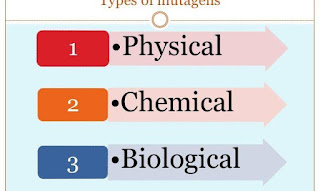MUTATION
- Mutation is any change in DNA sequence.
- It is a heritable change.
- Mutations can affect genotype as well as phenotype.
- It also leads to variations.
- Types of mutations:
- 1. Gene mutation-- Point mutations, frame-shift mutations
- 2. Chromosomal mutation- change in no. Or change in structure.
Gene mutation
A. ReplacementMutations that occur due to change in a single base pair of DNA is called as point mutations.
For example: sickle cell anemia
- When there is deletion or insertion of base pairs of DNA, it causes frame-shift mutations.
- Mutagens are the chemical and physical factors that induce mutations. UV rays can also cause mutations.
GENETIC DISORDERS
- Analysis of traits in several generations of family is called pedigree analysis.
- Inheritance of a particular trait is represented in the family tree over generations.
- Symbols used in pedigree analysis
GENETIC DISORDERS
Two types
1. Mendelian
2. Chromosomal
MENDELIAN DISORDERS
- Occurs due to single gene changes
Follow the inheritance pattern suggested by mendal
Can be Dominant or Recessive
Can be autosomal or sex linked.
Inheritance pattern can be traced in a family by pedigree analysis
- Autosomal disorders – cystic fibrosis, sickle cell anaemia, myotonic dystrophy
- Sex-linked – haemophilia, colour blindness
- HAEMOPHILIA –
- sex-linked recessive disease
- A single protein that is a part of the cascade of proteins involved in the clotting of blood is affected.
- In affected individual, a simple cut will result in non-stop bleeding.
- Heterozygous female (carrier) can transmit the disease to son.
- Possibility of female becoming a haemophilic is extremely rare.
COLOUR BLINDNESS
sex linked
Recessive






No comments:
Post a Comment